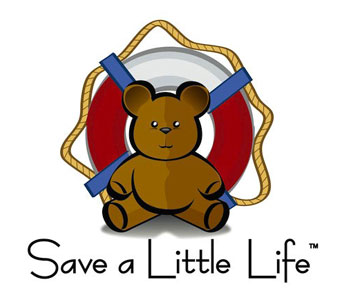PREVENTING PEDIATRIC DROWNINGS
I’ve just returned from the National Drowning Prevention Alliance‘s (NDPA) 2017 educational conference and am more motivated than ever to relay this important message to you:
DROWNING IS THE LEADING CAUSE OF DEATH
IN THE 1-4 YEAR AGE GROUP
It also remains a leading killer of children of all ages.
For that reason, we must do everything in our power to recognize the potential threat and keep our little ones safe.
If you attend the NDPA conference it’s impossible to avoid the reality that many families in the organization have already lost an infant or child to a drowning event. Every region of the U.S. is represented by families whose mission is singular: no baby or child should ever drown, and they are determined to make that a reality.
As a featured presenter, I did my best to speak directly to the subject of why immediate CPR is the best and perhaps only way to save lives once a child is pulled out of a bathtub, pool, hot tub or ocean.
I found myself delivering my speech shortly after a talk given by an emergency room physician and paramedic whose son had drown at age 4. Along with all the other devastated families, they too had believed that this could never happen to them. And yet it did, and in the presence of adult supervision. Their child simply submerged with little, if any noise and was not discovered until it was too late. Due to the length of submersion and the delay in initiating CPR, by the time help arrived, paramedic response was of little use.
Following that presentation, I went to the podium ready to share what I know but quickly realized that this was an audience the likes of which I had never addressed. In my E.R. days I saw firsthand the devastation brought about by drowning but it was also there that I discovered most infants and children pulled from the water survive due to action taken prior to the arrival of paramedics. Since then, I have worked with a number of clients who have pulled unconscious children from water, children who have survived due to quick responsive action before the arrival of the 9-1-1 team. The people attending the conference, however, were people for whom there had been no last-minute turnaround, no happy outcome, so I hesitated briefly before acknowledging the strength and courage of the mothers, fathers, grandparents and others who show up in spite of their loss to say NO to drowning. It was an extremely emotional moment in what was to be a very emotional week.
One of the highlights of the conference was a talk by Dr. John Fletmeyer, a world renowned expert in all aspects of drowning. His comments were confirmation of truths I have come to understand.
That is:
- “No one who is drowning yells for help.” A person who is drowning is in a desperate battle to stay above water and breath. Many drownings occur without a witness.
- Every drowning is unique. Any combination of circumstances and conditions can conspire to take a young life.
- Video and film depictions of drownings are almost always fictitious, yet viewed as fact. Consequently, many parents assume that a drowning would automatically be observed, understood and responded to immediately.
- One in five (20%) of the pediatric drownings in the U.S. occur in the presence of an adult who does not recognize what is occurring.
One aspect of Dr. Fletmeyer’s talk that really struck me was a simple comment on lifeguarding. In addressing parents who hire a lifeguard for pool parties and the like, he was adamant in saying “Lifeguards are not babysitters.” Dr. Fletmeyer stressed the importance of parents being present in the pool with their children and staying focused on them the entire time they are in the water, whether there’s a lifeguard or not.
I left the NDPA conference with a much stronger sense of the need for comprehensive prevention measures. It also left me with a renewed commitment to teach CPR to as many parents, family members and care providers as I can.
If anything is going to change with respect to preventing pediatric drownings, an extraordinary amount of preventive action will be required. That begins with a clear understanding of how crucial it is for CPR to begin immediately following a drowning.
Summer is rapidly approaching and seasonal statistics tell us that increased numbers of drownings will happen.
Save A Little Life’s goal is to join the NDPA in saying NO to drownings.
Please, join us in a class today.
Richard Pass, RN, BS, Director, Save A Little Life ™
View our CALENDAR for a list of upcoming classes
For More Information visit the NDPA web site




